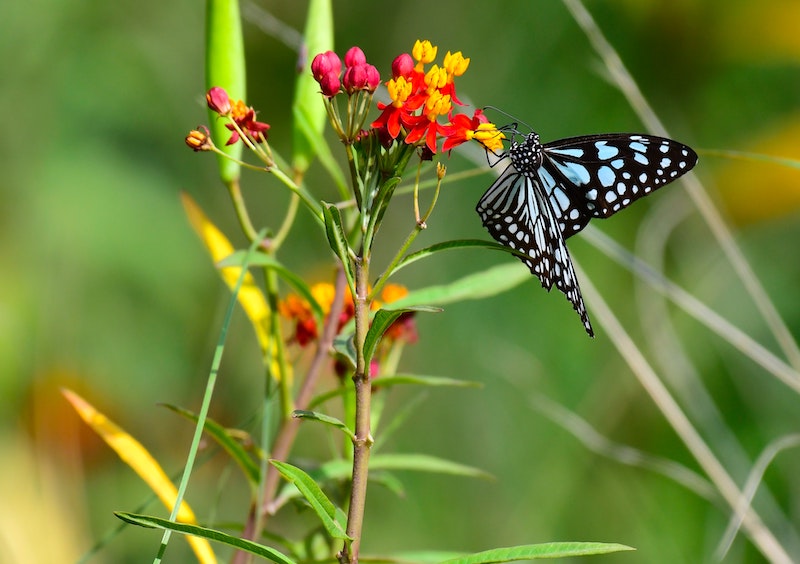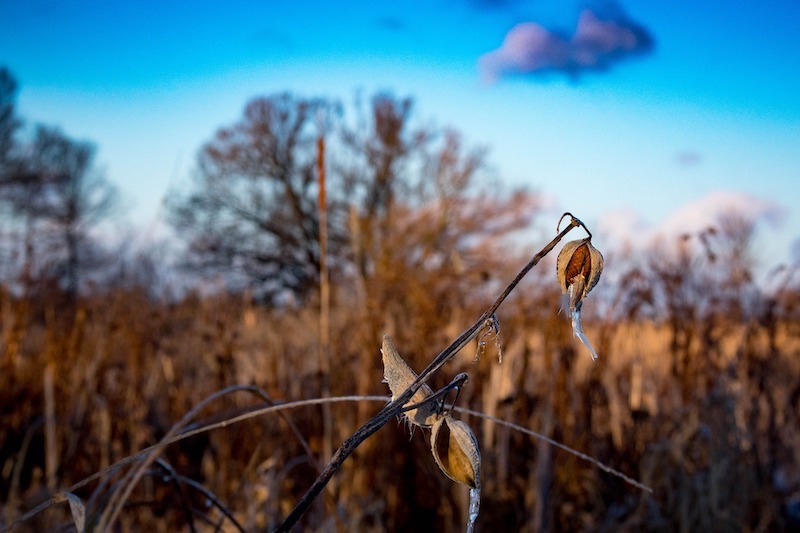Milkweed is a flowering perennial that grows in USDA zones 3 through 9. The blooms are available in a range of colors, from white and lavender to reds, oranges, and yellows. This low-maintenance plant is a well-known favorite of Monarch butterflies, making it a wonderful choice for a butterfly garden.
Milkweed does not require much pruning, but some gardeners choose to remove the flowers as they fade to prevent the plant from self-seeding. Native Milkweed is a herbaceous perennial, and it will die back in the fall, while tropical Milkweed will retain its growth in warm areas. Since Monarch butterflies may seek refuge in the branches of tropical Milkweed, it is recommended to cut the growth back to discourage butterflies from overwintering.

When to Prune Milkweed
Milkweed has a mounded upright growth habit and does not generally need to be trimmed or shaped. The plant can be trimmed late in the summer when the flowers transition into seed pods. This plant is a prolific self-seeder, and many gardeners opt to remove the seed pods to prevent an abundant crop of plants from taking root.
Another time to prune Milkweed is during the fall. The growth can be cut back to about 6 inches tall at the end of the growing season.

Why Prune Milkweed
The darling flowers grow in clusters that later become long seed pods. The seed pods burst open late in the summer, and gusty winds distribute the seeds. Milkweed plants can easily overtake a yard or entire neighborhood, and many gardeners remove the blooms to ensure the seeds do not take root and inundate an area.
Native Milkweed is a herbaceous perennial; the growth will die back when the weather turns cold. Tropical Milkweed will keep its growth in warm areas. Nesting colonies of Monarch butterflies may be inclined to overwinter in tropical Milkweed. Milkweed plants can support a parasite that can be damaging to Monarch butterflies. Since native plants die back at the end of the growing season, the parasite dies with the plant if it is present, so damage to the butterfly population is limited.

Since tropical plants do not die back, the parasite can thrive and continue to inflict harm. Monarch populations have plummeted in recent years, and the species is on the verge of being endangered. Trimming the Milkweed plant back late in the season will encourage the butterflies to move on to areas more suitable for their survival.
How to Prune Milkweed
Step 1 - Inspect the plant
Dead or damaged growth can be cut back at any time
Step 2 - Remove spent flowers
Flowers can be removed as soon as they start to fade or turn into seed pods to prevent new plants from growing.
Step 3 - Cut all of the growth at the end of the growing season
Trim back all the branches to about 6 inches tall to maintain a tidy look and discourage butterflies from overwintering in the area.
Milkweed Pruning Tips
- Trim the plant to remove damaged or dead growth.
- Cut back faded flowers or seed pods to prevent the plant from self-seeding.
- Prune the entire plant back to about 6 inches in the fall.
 |
Author Alison Cotsonas - Published 08-07-2022 |
